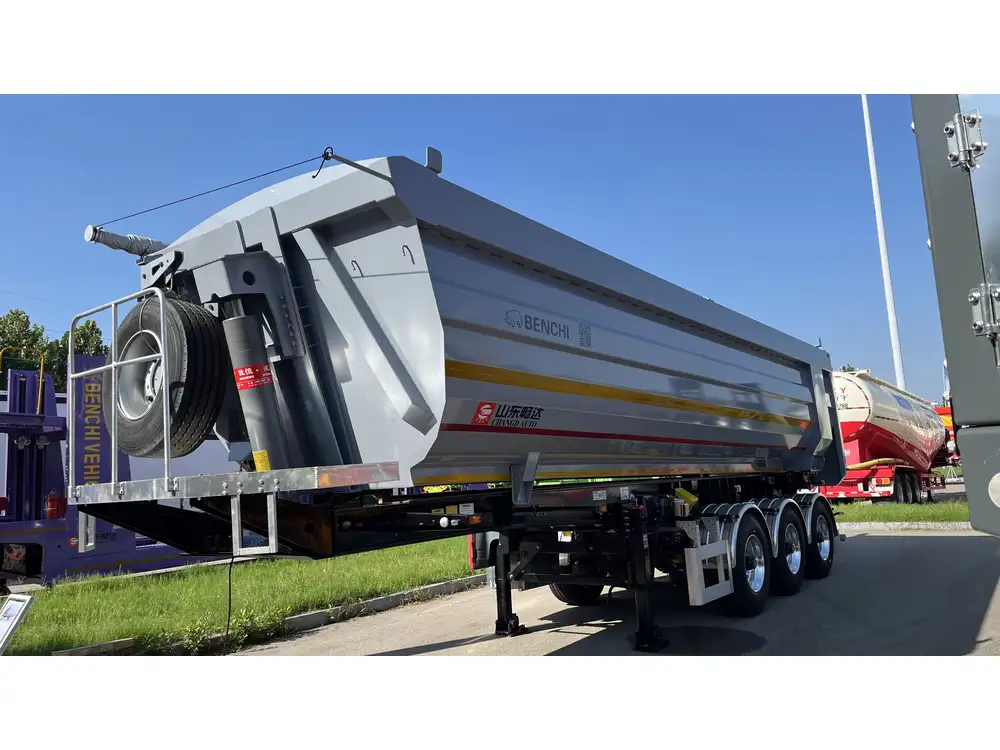When it comes to dump trailers, understanding their specifications, particularly their weight, is crucial for operators, owners, and manufacturers alike. A 16ft dump trailer serves diverse needs, from hauling construction materials to managing agricultural waste. However, one pivotal aspect that requires attention is the weight of the dump trailer, which influences towing capacity, payload limits, and overall effectiveness.
Table of Contents
- What is a Dump Trailer?
- Key Specifications of a 16ft Dump Trailer
- Weight of a 16ft Dump Trailer: Factors Influencing Weight
- Typical Weight Range of 16ft Dump Trailers
- Payload Capacity and Considerations
- Choosing the Right Dump Trailer for Your Needs
- Benefits of Understanding Dump Trailer Weights
- FAQs about 16ft Dump Trailers
What is a Dump Trailer?
A dump trailer is a specialized vehicle designed to transport bulk materials. These trailers have a hydraulic system that enables the bed to tilt for unloading. This feature makes them highly suitable for construction projects, landscaping, and other endeavors requiring the transport of loose materials like gravel, sand, dirt, and debris.

Key Specifications of a 16ft Dump Trailer
When delving into the world of dump trailers, several key specifications come into play:
| Specification | Description |
|---|---|
| Length | 16 feet |
| Width | Typically ranges from 6 to 8 feet |
| Height | Standard height can vary, generally between 2 to 4 feet |
| Weight Capacity | Assaults a range up to 15,000 pounds or more |
| Construction Material | Steel or aluminum, with each having distinct benefits |
| Axles | Usually equipped with tandem axles for better stability |
These specifications can affect the operational versatility and performance of the trailer.
Weight of a 16ft Dump Trailer: Factors Influencing Weight
The weight of a 16ft dump trailer can vary based on several factors, including:
Material Composition:
- Steel Trailers: Generally heavier due to the material density, offering greater durability.
- Aluminum Trailers: Lighter, contributing to higher payload capacities but can be more susceptible to damage in certain contexts.
Design Features:
- Single vs. Tandem Axles: Tandem axles provide better weight distribution hence can handle heavier loads but add to the overall weight.
- Construction Reinforcement: Additional reinforcements for heavy-duty applications increase weight but enhance durability.
Hydraulic System: The complexity and size of the hydraulic lift mechanism can contribute significantly to the overall weight of the trailer.
Extras and Accessories: Features like sideboards, ramps, and toolboxes all add additional weight, which can influence both towing dynamics and payload capacity.
Typical Weight Range of 16ft Dump Trailers
The average weight of a 16ft dump trailer typically ranges between 2,500 to 3,400 pounds when empty. Here’s a breakdown:
| Type | Average Weight (Empty) |
|---|---|
| Standard Steel Dump Trailer | 2,800 – 3,200 lbs |
| Heavy-Duty Steel Dump Trailer | 3,200 – 3,400 lbs |
| Aluminum Dump Trailer | 2,500 – 2,800 lbs |
Understanding the typical weight helps potential buyers or operators gauge the ability of their vehicle to safely tow the trailer without exceeding the capacity.

Payload Capacity and Considerations
The payload capacity of a 16ft dump trailer is crucial in understanding not just how much it can carry, but also how its weight interacts with towing vehicles. Here are key components:
Towing Vehicle Capacity: Before engaging a dump trailer, the towing vehicle’s weight rating must be checked. This ensures safety and efficiency during transport.
Payload Calculation: To determine the total load, subtract the trailer’s weight from its Gross Vehicle Weight Rating (GVWR). For example:
If a 16ft dump trailer weighs 3,000 lbs with a GVWR of 10,000 lbs: [ \text{Payload Capacity} = \text{GVWR} – \text{Trailer Weight} = 10,000 – 3,000 = 7,000 \text{ lbs} ]
Load Distribution: Properly distributing the load throughout the trailer prevents swaying and ensures safe maneuverability while traveling.
Choosing the Right Dump Trailer for Your Needs
When selecting a dump trailer, various factors should be considered to meet specific operational requirements:
- Purpose: Determine the primary use (construction, landscaping, etc.), which influences requirements like weight capacity and durability.
- Vehicle Compatibility: Ensure compatibility with towing vehicles and consider weight distribution.
- Budget: Explore options that fit financial constraints while also providing appropriate specifications.
Comparison of Common Dump Trailer Types
| Type | Best Use Case | Advantages | Disadvantages |
|---|---|---|---|
| Standard Steel | Regular construction jobs | Durable, high payload capacity | Heavier, reduced efficiency due to weight |
| Heavy-Duty Steel | Extreme load jobs | Excellent durability for heavy loads | Can be cumbersome for lighter vehicles |
| Aluminum | Lightweight transport needs | Lightweight, corrosion-resistant | Lower durability under extreme conditions |
Choosing the right trailer can exponentially enhance operational efficiency and cater to specific needs effectively.

Benefits of Understanding Dump Trailer Weights
Enhanced Safety: Knowing the weight ensures compliance with towing regulations, which helps avoid accidents and ensures road safety.
Optimized Performance: Adequate weight knowledge allows operators to maximize payload without compromising stability.
Easier Navigation: Understanding the dynamics of towing a specific weight helps in smoother maneuvering, especially in tight or uneven spaces.
Cost-Efficiency: Knowing weights aids in maximizing efficiency, reducing fuel consumption, and minimizing wear on towing vehicles.
FAQs about 16ft Dump Trailers
Q1: How do I determine the right trailer weight for my vehicle?
A1: Review your vehicle’s manufacturer specifications to identify its towing capacity, then select a trailer whose weight plus payload doesn’t exceed this limit.

Q2: Are lighter dump trailers better?
A2: Not necessarily, as lighter trailers may sacrifice durability and longevity for weight. Evaluating the balance between weight and use-case requirements is critical.
Q3: How do I maintain my dump trailer’s hydraulic system?
A3: Regular checks for leaks, fluid levels, and system responsiveness contribute to the longevity and effectiveness of the hydraulic lift mechanism.
Q4: What is the difference between steel and aluminum dump trailers in terms of weight?
A4: Typically, steel trailers are heavier but more durable, while aluminum trailers are lighter, enabling higher payload capacities, albeit with some trade-offs in durability.

Q5: What resources are available for assessing trailer weights?
A5: Manufacturers usually provide detailed specifications, or users can refer to owner’s manuals. Online forums and reviews can also provide user insights.
In summary, understanding the weight implications of a 16ft dump trailer elucidates the broader operational framework encompassing safety, performance, and efficiency. Armed with this knowledge, operators can make informed decisions leading to enhanced functionality and satisfaction in their hauling tasks.



